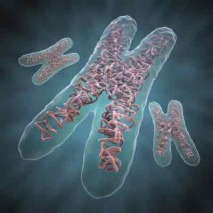What is Genetic Engineering?

Genetic engineering is the alteration of genes and its code by artificial ways, it includes the manipulation, recombination or splicing of an organism’s genes. It is different from selective breeding and sometimes it actually involves molecular cloning or transformation to alter the structure and characteristics of genes directly. Currently, vaccines such as Hepatitis B have been created through genetic engineering. Genetic engineering could have major advantages in the future but there is strong debate on the ethics and whether it will backfire. This is a controversial topic with many on both sides.
Scientific Principles

As most of you know genes are made up of DNA (deoxyribonucleic acid). This makes up all the nature and characteristics of every living creature. Each creature has a special combination which results in different things but if a slight alteration was made to this they would have new traits. This could result in positive things.
Things that have been genetically engineeredgenetically include some bacteria that have been designed to break down oil and industrial waste products. Plants that are resistant to diseases, insects, herbicides and that also produce fruits or vegetables with desired qualities have also been produced They have also been genetically engineered to create toxins as pesticides. Genetic engineering techniques have also been used in the genetic alteration of livestock and laboratory animals which is known as pharming. Bacterial production of human interferon, human insulin and human growth hormones have also been made possible.
One such example of genetic engineering that has changed and benefited the world in a big way is the insertion of a human insulin producing gene into a weakened strain of E. Coli. Resulting it in producing insulin. This insulin produced by bacteria is used by millions of people with diabetes and this is one of the major breakthroughs in science.
Things that have been genetically engineeredgenetically include some bacteria that have been designed to break down oil and industrial waste products. Plants that are resistant to diseases, insects, herbicides and that also produce fruits or vegetables with desired qualities have also been produced They have also been genetically engineered to create toxins as pesticides. Genetic engineering techniques have also been used in the genetic alteration of livestock and laboratory animals which is known as pharming. Bacterial production of human interferon, human insulin and human growth hormones have also been made possible.
One such example of genetic engineering that has changed and benefited the world in a big way is the insertion of a human insulin producing gene into a weakened strain of E. Coli. Resulting it in producing insulin. This insulin produced by bacteria is used by millions of people with diabetes and this is one of the major breakthroughs in science.
